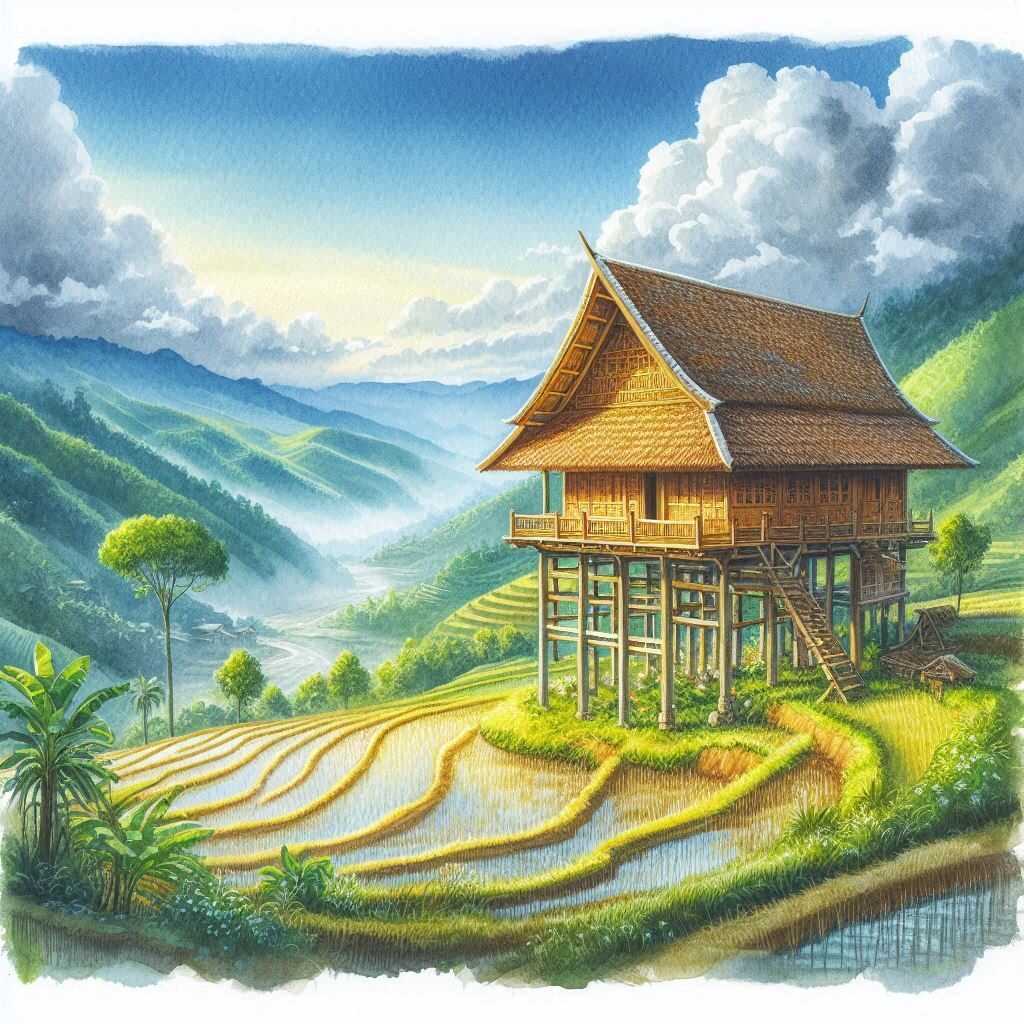
17 MINUTE READ
You may find it eerie to have a tattoo or keep skulls in your living room, but it’s completely natural when it comes to Nagaland. Yet every single item they carry or own has a tale behind it.
The Naga tribes, consisting of more than twenty different groups, have an extensive history of architectural creativity, seen in the distinctive styles of their homes. These homes represent the ideals and spirit of Naga civilization, serving as more than just architectural constructions but also as archives of cultural legacy.
Every feature of Naga tribal homes is rich in symbolism and history, from the colorful murals that cover the walls to the finely carved pillars.
So let’s delve into the tribal architectural ocean of Nagaland with this blog!
The Historical and Geographic Context of Nagaland
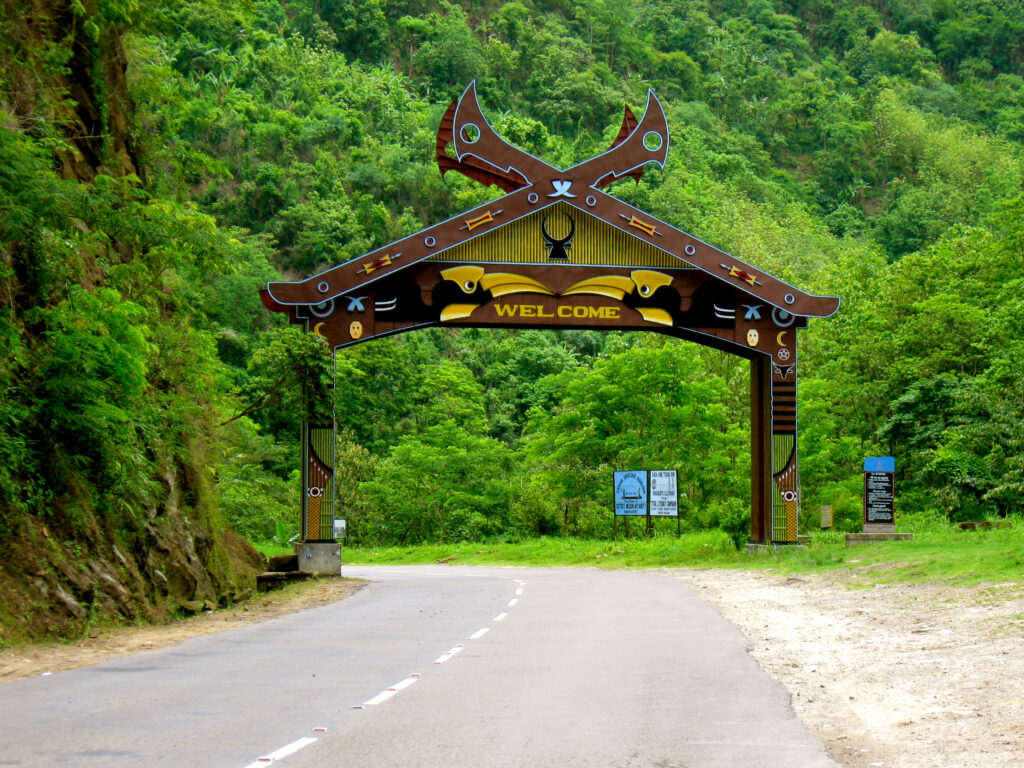
India’s northeastern state of Nagaland is bordered to the north by Arunachal Pradesh, to the west by Assam, to the south by Manipur, and the east by the Naga Self-Administered Zone of the Sagaing Region of Myanmar (Burma). Kohima is the state’s capital and Chümoukedima–Dimapur is its largest city.
16 Administrative Districts make up Nagaland, which is home to 17 major tribes as well as several smaller tribes. Every tribe has unique rituals, languages, and clothing that set them apart from one another. It is where oral tradition has been passed down through the years. The 13th century is when the Nagas of modern-day Nagaland were first mentioned in written history.
It was the 19th century when British forces took control of the Northeastern states of India. The political status of the Naga Hills became an issue following India’s independence in 1947. Known to others as “The Naga Hills,” Nagaland was a district in Assam until 1957. Under the leadership of Zapu Phizo, the Naga National Council began an armed rebellion and demanded the creation of an independent Naga state. An extended insurgency was the outcome of the dispute between the Indian government and the Naga National Council.
A wide range of natural, environmental, and cultural resources may be found in Nagaland. The state is mountainous and is located between 25.2° and 27.0° north latitude and 95° and 94° eastern longitudes. Situated near Viswema, lies the well-known Dzüko Valley, in the southern part of the state. In addition to having abundant hydropower, petroleum, and natural mineral resources, the state’s primary sector—which still makes up the majority of its economy—remains at 24.6%. Real estate, insurance, horticulture, forestry, tourism, and various cottage businesses are among the other important industries.
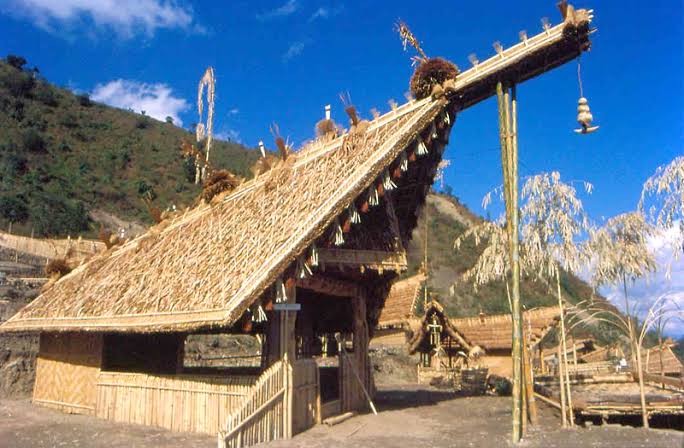
In light of several instances including inter-tribal fighting throughout history and colonization impacts during British rule, Nagaland’s architectural heritage has great historical significance. Government restoration efforts have preserved many of the colonial-style buildings that were built in British colonies in the 19th century, such as Kohima and Dimapur. Some Morung longhouses found among Konyak tribes also show ancient defensive strategies used against external dangers such as competing clans or invading soldiers centuries ago. In addition to housing solitary men, these majestic structures acted as training grounds for young men to cultivate a warrior mentality through storytelling events about past victories against adversaries.
The Ao and Lhota towns are linear and appear like something stable and compact because of the homes on both sides and the typical main roadways. Due to the proximity of the houses and the narrow path in some places, the gables of the buildings on opposite sides meet.
The Vernacular Style of Nagaland
Characteristics
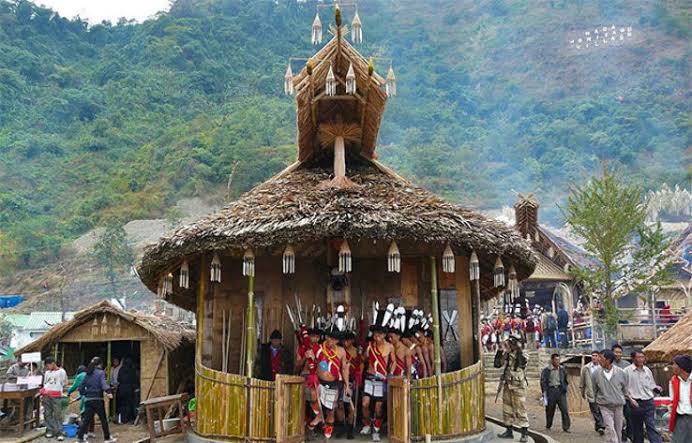
Organic interaction with the surrounding environment and cultural identity is a defining feature of Nagaland’s vernacular architecture. A healthy and sustainable coexistence between humans and the natural world is reflected in vernacular architecture, which is constructed using locally available materials like bamboo, wood, and thatch.
Roofing Materials and Styles
Roofs with steep pitches, like thatch roofs, or those with elaborately woven bamboo designs are all useful and aesthetically pleasing.
Bamboo roofs highlight the region’s wealth of natural resources and workmanship, while thatch roofs, made from grasses or palm fronds that are produced locally, offer superior thermal insulation and defense against the weather.
Furthermore, contemporary roofing elements such as corrugated metal sheets are occasionally included in conventional designs to combine convenience with heritage.
Structures: Pillars and Beams
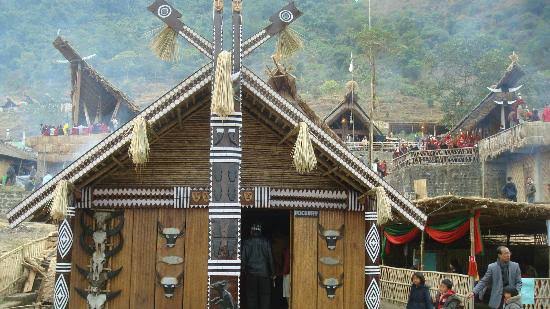
These structural components, which are made from locally harvested hardwoods including teak, oak, and sal are renowned for their sturdiness, strength, and fine carvings. Often used as an ornamental element, pillars are embellished with customary patterns and emblems that represent the community’s cultural identity.
However, beams have intricate floral themes that give way to plain geometric patterns and provide vital support for the walls and roof.
Materials Used
The Nagas primarily use local materials like thatch, bamboo, stone, and wood, to build their houses. Every material is carefully selected to guarantee sustainability and longevity and has symbolic meaning. Renowned to be the “green gold” of the area, bamboo is highly valued for its resilience, suppleness, and quantity. Thatch roofs are made of grass or palm leaves and not only offer protection from the weather but also a distinctively rustic, Naga aesthetic.
The Sense of Sustainability in Nagaland
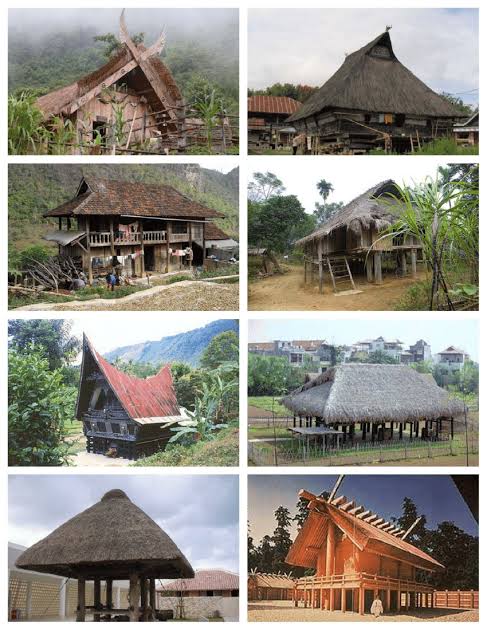
Apart from giving Nagaland’s architectural authenticity, the use of locally produced materials like timber, bamboo, and thatch encourages sustainability. Eco-friendly building techniques, such as bamboo lattices and interlocking wood joints, maximize structural integrity while reducing their negative effects on the environment.
The rough topography and diverse climate of Nagaland have had a significant influence on Naga house designs. Designed to endure severe weather and natural calamities, these edifices showcase the inventiveness of native building techniques. For instance, homes in mountainous areas are frequently built on stilts to avoid floods during the time of monsoons, but homes in plain areas employ thatch and bamboo because of their flexibility and low weight. These adaptations show how closely the Naga people are linked to their natural environment.
Innovative hybrid structures have developed from the integration of modern and traditional architectural forms brought about by increased access to technology and resources from outside the region. To guarantee that these advancements stay loyal to Naga’s traditional values and identity, cautious management is necessary.
Community and Spiritual Connect in Nagaland
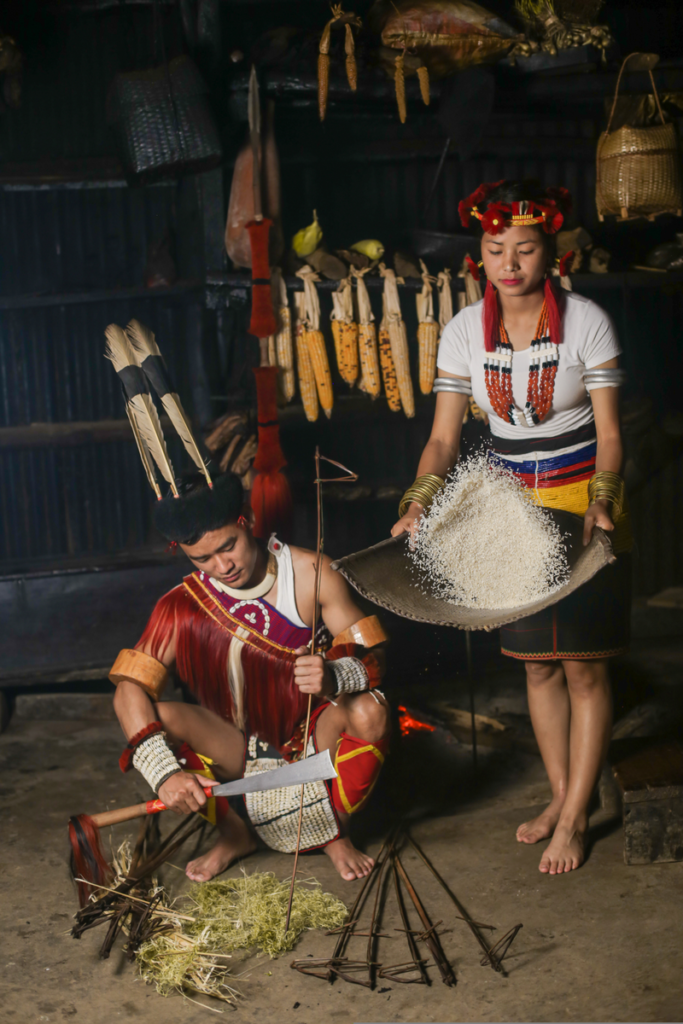
Naga communities have been passing down traditional building techniques and knowledge for generations, which has fostered a sense of collective pride and obligation in building projects. Villages work together to construct granaries, houses, and common areas, enhancing ties between neighbors and conserving cultural legacy.
Naga architecture is full of ritualistic and spiritual elements, and it is deeply entrenched in animistic beliefs. Every element of a building is influenced by ancient customs and beliefs, from the house’s orientation to the locations of doors and windows. For instance, a house’s entryway facing east welcomes the rising sun, a sign of blessings and wealth. Akin to this, elaborate carvings and themes protect the residents from evil spirits by acting as talismans.
The Building Types of Nagaland
Morung
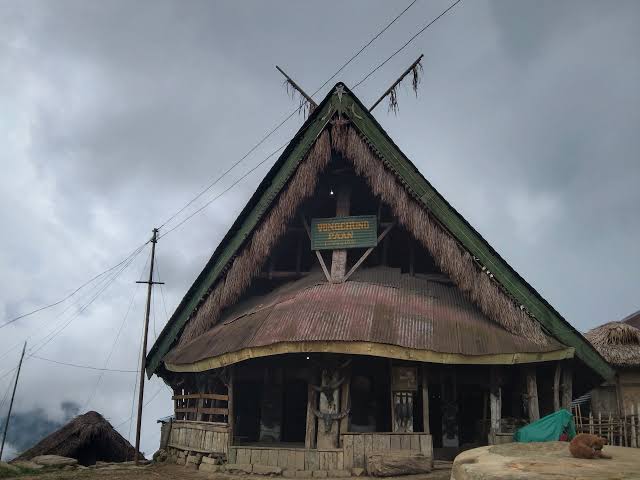
The Naga tribes use the Morung, a traditional communal home, for a variety of social and ceremonial functions. These buildings usually have raised platforms, symbolic patterns, and elaborate wood carvings. Even though they aren’t really “famous” in the traditional sense, Morungs are treasured architectural pieces in Naga villages and have great cultural significance.
Several tribes mostly use morungs, which are community dormitories, to house single men and boys. These structures are essential for the younger generations to inherit cultural traditions, understanding, and oral traditions.
It functions as an essential institution that is essential to the development of Naga society’s educational, social, and cultural facets. Morungs are intimately related to several rites of passage and initiation ceremonies that denote important turning points in a Naga person’s life. Initiations into maturity, warriorhood, and other social positions are part of these rites.
Longhouses
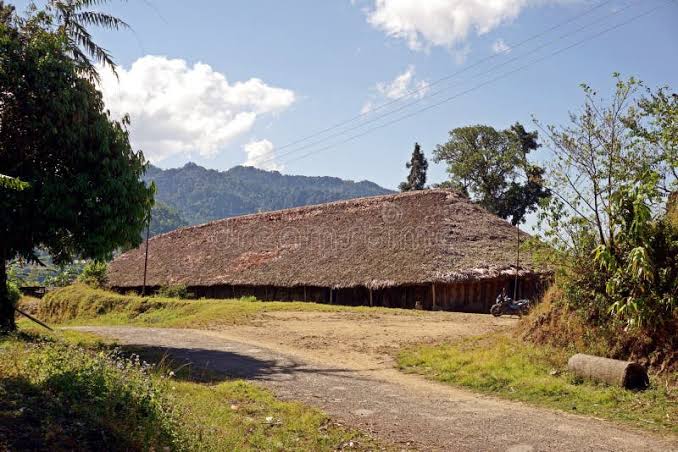
Another distinctive aspect of Naga architecture, particularly in the Lotha and the Ao tribes, is longhouses. These lengthy buildings are made of wood, thatch, and bamboo and are used as living quarters for large families. Every longhouse has several sections with common areas for sleeping, socializing, and cooking. Longhouses, albeit not particularly well-known, embody a particular architectural style that is exclusive to Nagaland.
Stone Monoliths

Ancient stone monoliths that represent historical incidents, ancestral spirits, or tribal territories are scattered over Nagaland. Known as “menhirs,” these enormous stone structures are finely carved with inscriptions and symbolic themes. Despite not being regular architectural structures, these monoliths are regarded as holy relics and important cultural sites in Nagaland.
Huts
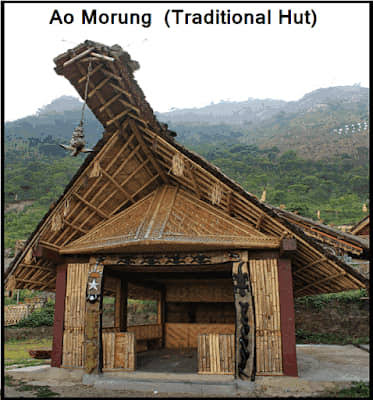
The Naga hut is a prime example of indigenous architecture in Nagaland. It is often built using readily available materials, including timber, bamboo, thatch, and occasionally stone. Often built on stilts, the huts serve as storage below and as a barrier against wild animals and floods.
The Naga approach to life, social relationships, and ingrained connections to the natural world and ancestors’ customs are all greatly influenced by these ancient structures.
What is Sema Architecture?
Sema Architecture
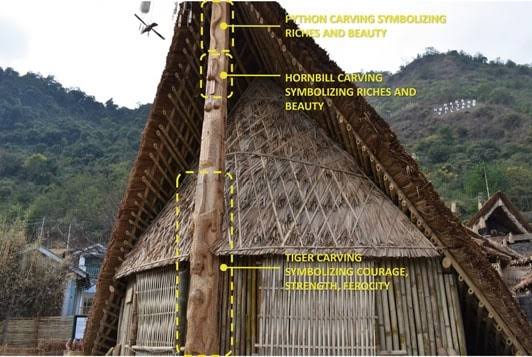
They construct Sema architecture in the shape of a rectangle with a wider beginning and a narrower end. The Naga tribes approach the building via a tall rooftop at the entrance, and the thatch roof’s sloping design keeps them warm inside during the cold and helps them during rainy times by allowing water to pass through rather than collect in the roof.
Sema interior
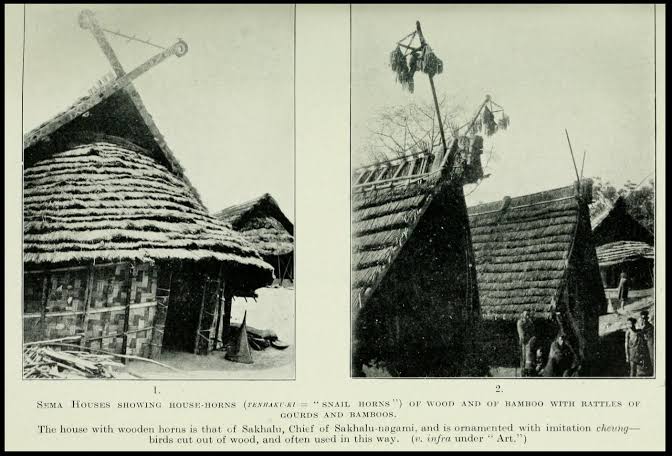
Ancient designs influenced the interior design of the Nagaland tribes.
Akishekhoh: It is the area in front where the tables for pounding rice were stored.
Abidelabo: The unmarried girls sleep in the Abidelabo, a small chamber situated amid the Akishekhoh & the Amiphokiboh (hearth room).
Akuzu-Abo: It is the room for the family head and his wife.
Azhi-Bo: It is the liquor room with the bamboo containers holding the rice brew.
Another significant point to note when reading about Nagaland’s architecture is the Koyank architecture. The Koyank are a prominent tribal community surrounding the Naga people, and they are renowned for their courage and headhunting prowess.
The Koyank people utilize skulls to decorate their houses in honor of their bravery, and they create houses that are larger than typical Sema architecture.
Every year during December’s first week, people from various tribal groups in Nagaland come together in the “heritage village,” or Kisama, close to Kohima, to celebrate and preserve the region’s rich cultural heritage while also showcasing it to the rest of the world. In the heritage village, you could see naga cuisine, traditional dances, wood crafts, and architectural residences.
What Does a Typical House Look Like in Nagaland?
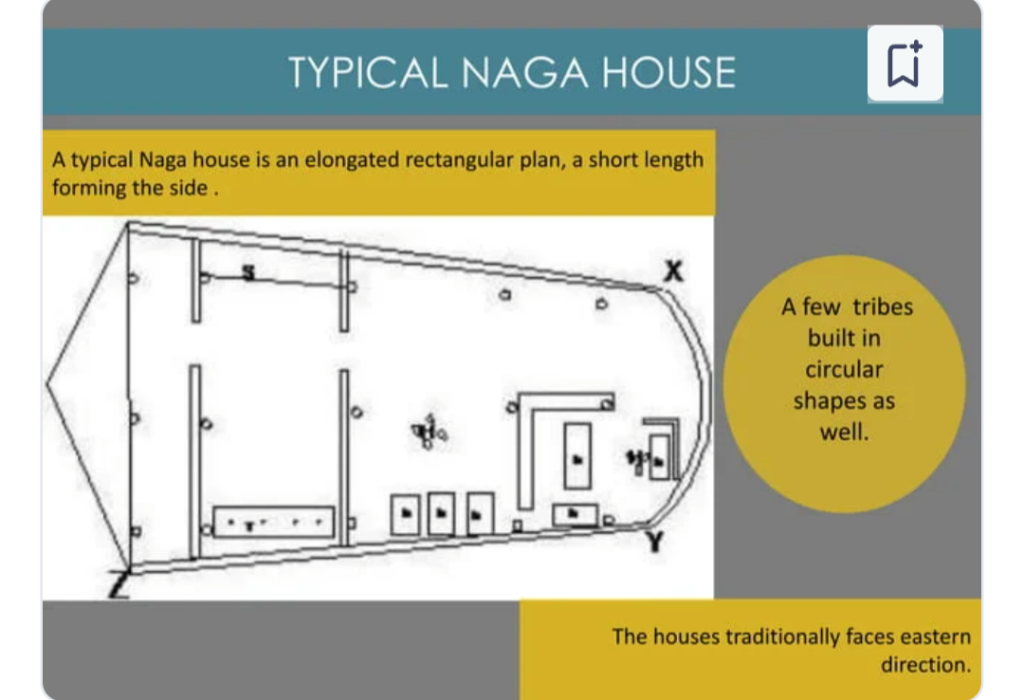
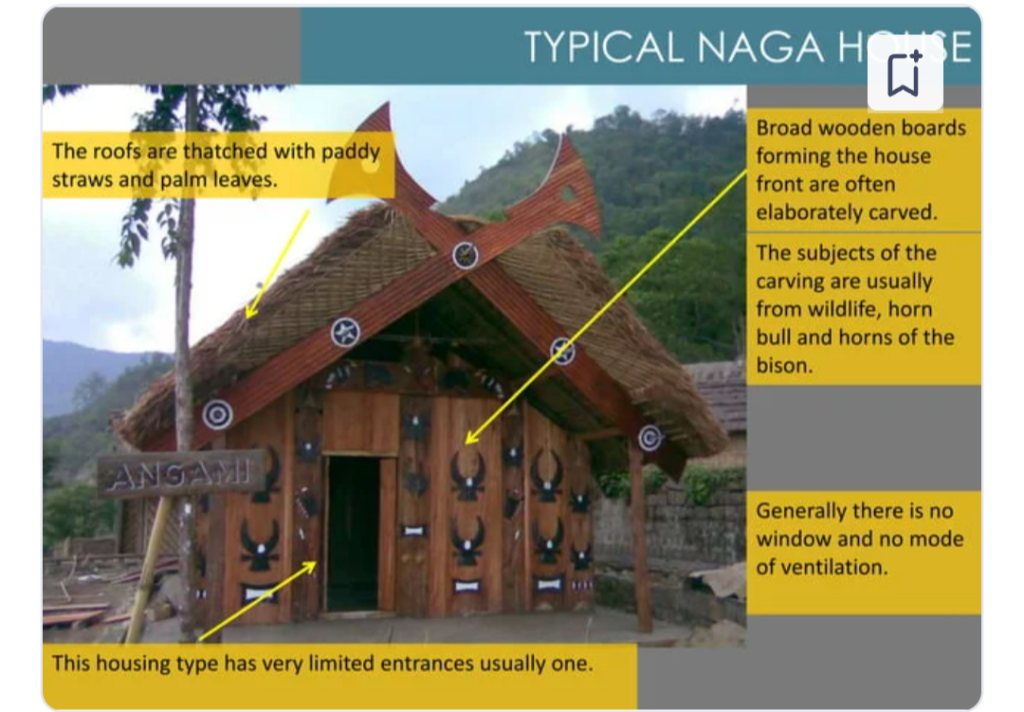
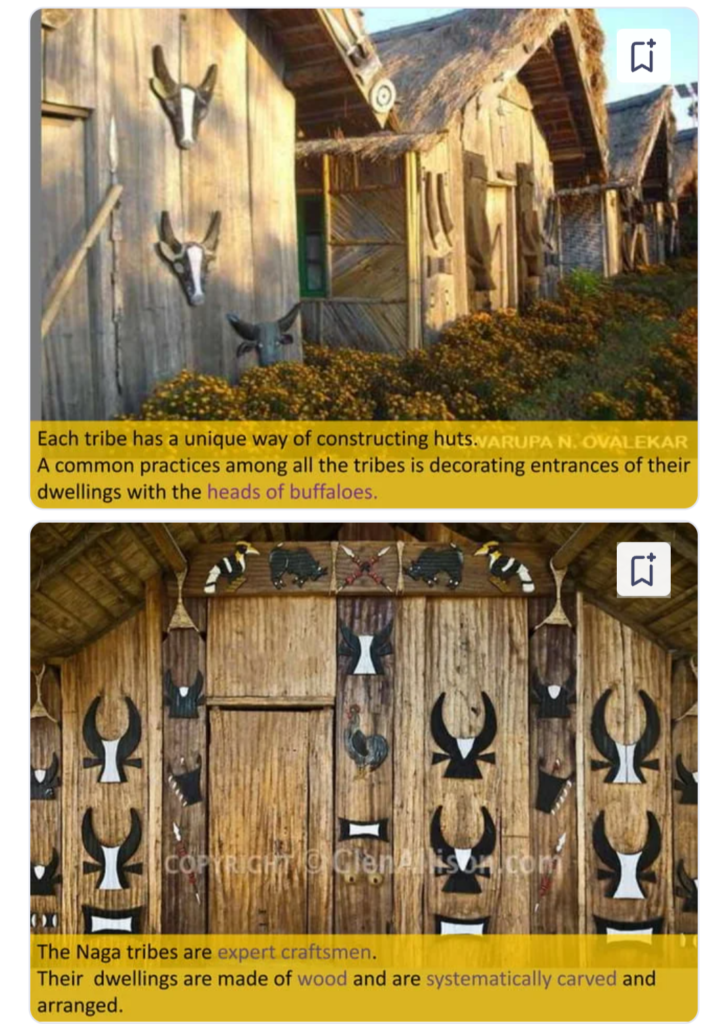
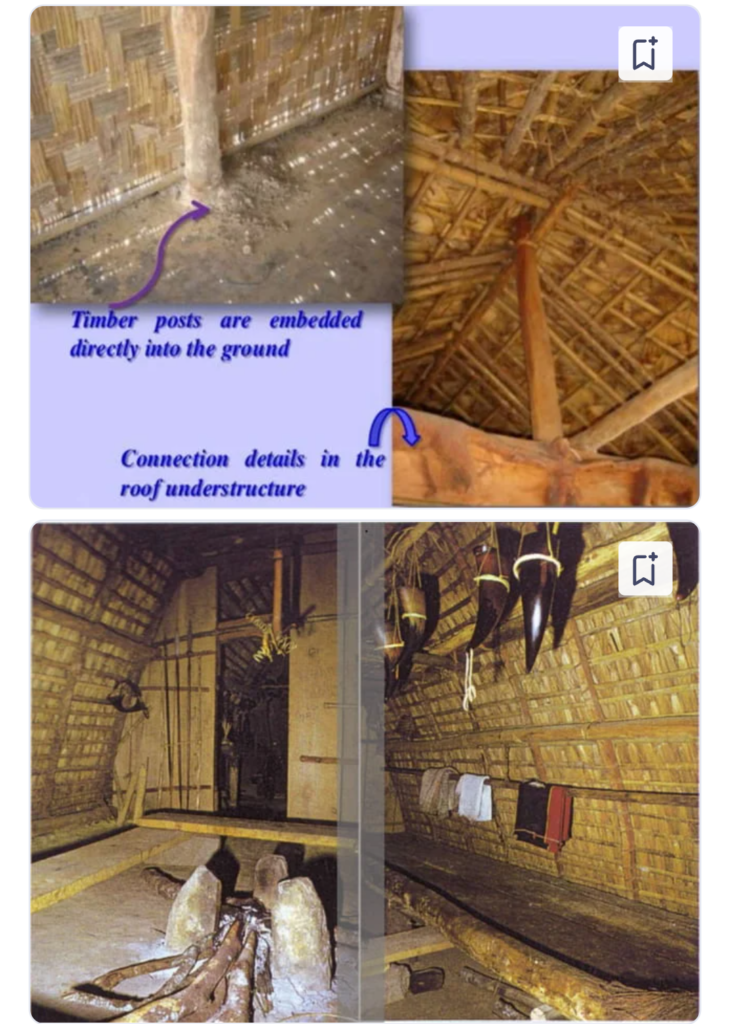
- Every tribe has a unique technique for constructing shelters.
- All tribes have the custom of using buffalo heads to adorn their doorways.
- The traditional Naga dwelling has an extended rectangular layout with a short length creating the side.
- The houses are generally east-oriented.
- They employ bamboo for a range of purposes to meet their everyday needs, including their most basic need for shelter.
- The huge wooden boards that comprise the front of the house are often intricately carved.
- The roofs are covered using paddy straw and palm leaves. Numerous animals, including bull and bison horns, appear in the carvings.
- Typically, this type of dwelling has a few entrances. Typically, there is no ventilation system, not even windows.
- The primary building materials used to construct tribal dwellings are wood, bamboo, and thatch. These materials work well as good insulators to keep interior spaces warm because they are poor heat conductors.
- The low surface area to volume ratio of the houses prevents significant internal heat loss as a result. The cooking fire is situated in a central enough location to function as the family’s main source of warmth during cold nights.
- People usually push house entrances farther into the ground from the roof to keep the rain out.
- To guard the entry, a separate shallow roof may occasionally emerge from the shadow of the main roof, just like in Sema houses.
- To construct a veranda sans attaching a roof to the gable end, other tribes typically angle their gable, or sloping edge, outward.
- Every tribe has a unique set of inherited forms. Every tribe has a communal structure to existence, albeit there are differences in the level of hierarchical organization.
- As a result of their greater hierarchical social structure, the Konyak have larger residences than the Sema.
What is the Settlement Pattern in Nagaland?
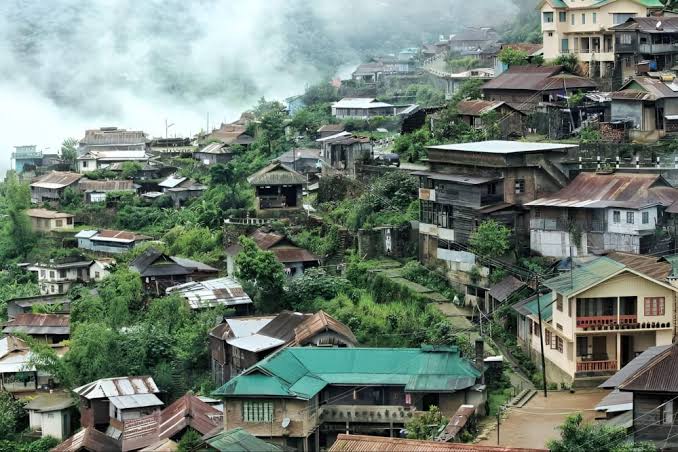
Not all of Nagaland follows the same settlement trend. The Naga people follow a purposeful design in the placement of residences, public places, and sacred areas, reflecting their social and cosmological beliefs.
When designing villages, there is often a great regard for the environment, with the surrounding scenery in mind. The village operates as a harmonious and spiritually congruent community because of the careful planning that went into it.
Additionally, by promoting rituals and communal interactions, the layout strengthens cultural traditions and social ties.
The sizes of settlements vary greatly between regions. While Angami villages typically contain 400 or more households, Kohima village has above 700 homes.
In Sema villages, there are usually one hundred homes. Many Naga tribes, like the Semas, feature twin fences having a ditch in the midst. Most Naga communities are “fenced” for defense. The most elegant Naga dwellings, often referred to as morungs, are usually located in front of the community’s gate or entryway. Village patterns in Nagaland are generally of the compact kind, exhibiting both linear as well as amorphous patterns.
Major Buildings and Places in Nagaland
Kohima War Cemetery
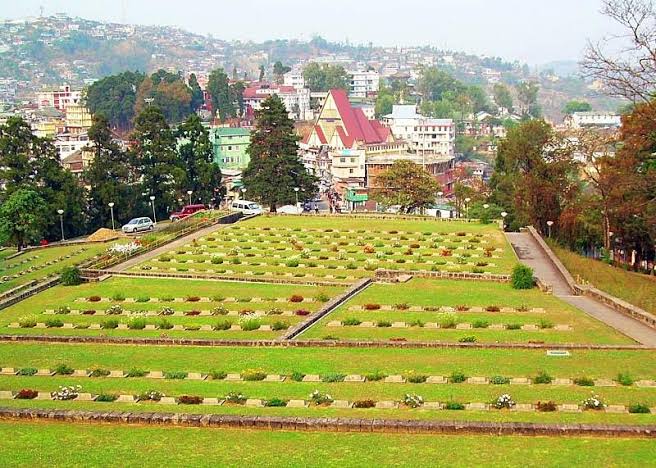
The Kohima War Cemetery is a moving tribute to the men who bravely fought and gave their lives in the crucial Battle of Kohima, which took place during World War II. The cemetery’s immaculate grounds and rows on rows of white gravestones, quiet monuments to the sacrifices made, are testaments to the place’s solemnity.
State Museum
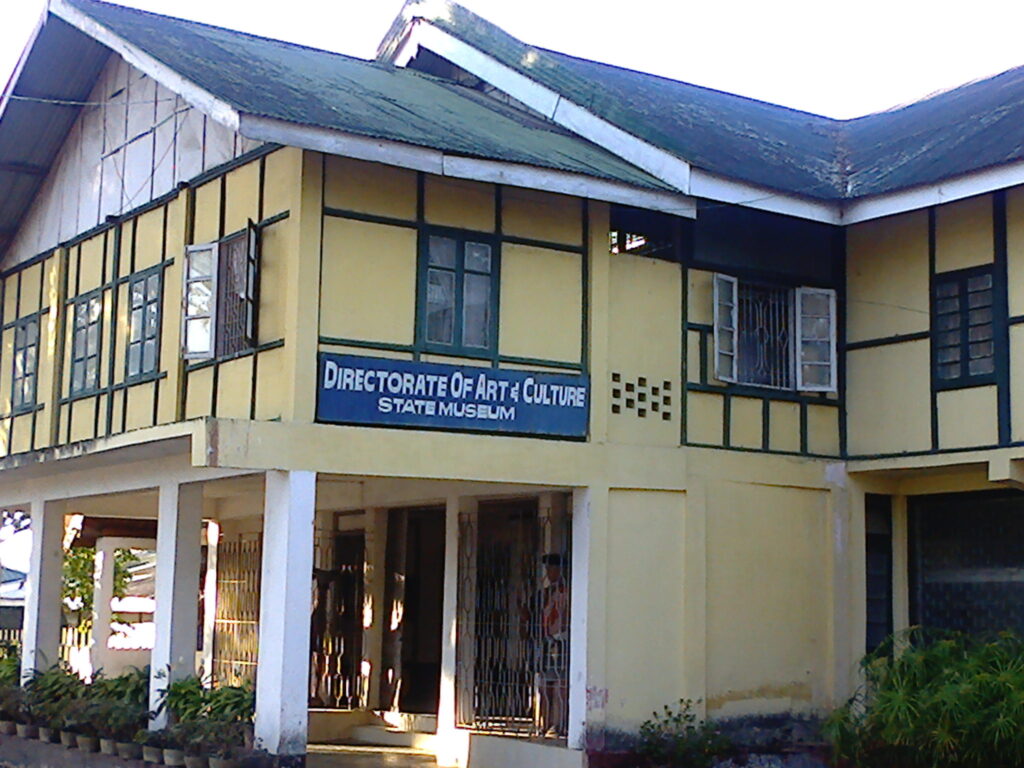
The State Museum of Nagaland, housed in the state capital of Kohima, is a veritable gold mine of cultural heritage, providing visitors with a thorough understanding of the state’s varied history, customs, and artistic expressions. The museum is an integral part of the process of conserving and presenting Nagaland’s rich legacy.
Changtongya Stone Monoliths
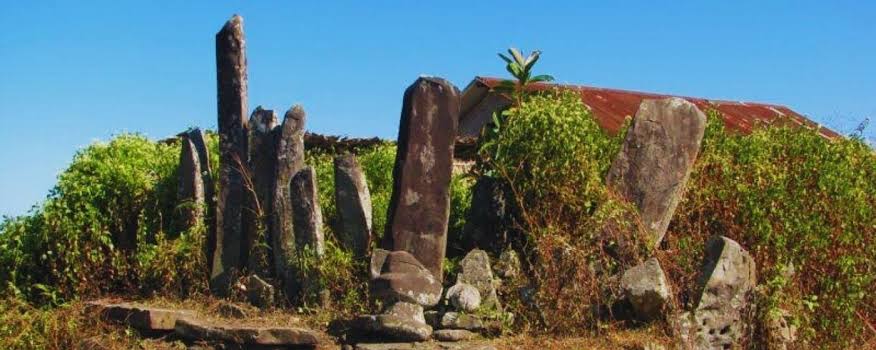
Situated in Nagaland’s Mokokchung District, the Changtongya Stone Monoliths serve as silent reminders of the area’s rich cultural past. It is thought that the Ao Naga tribe’s social and ceremonial life was significantly influenced by these ancient stone monoliths. These monoliths, adorned with elaborate patterns and symbols, are believed to have functioned as markers for a variety of ceremonies and occasions. The artistic as well as technical prowess of the predecessors is reflected in the artistry of these stones.
Longkhum Village Monoliths
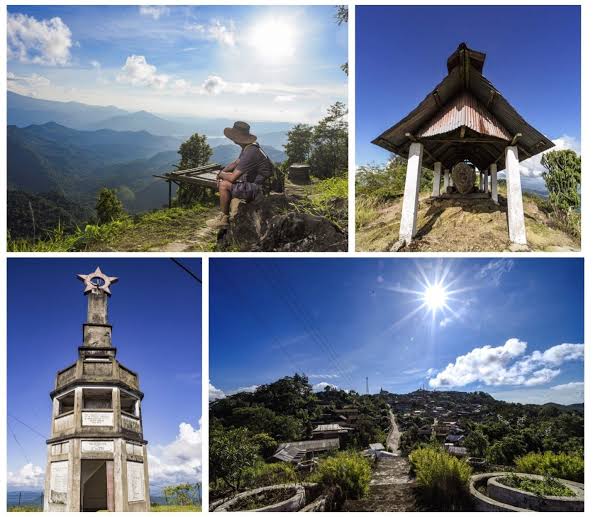
The Longkhum Village Monoliths, located in the Mokokchung District above a hilltop, provide an enthralling look into the past and customs of the Ao Naga people. With their elaborate engravings and sculptures, these monoliths portray events from the ancestors’ lives.
Mokokchung Village Gates
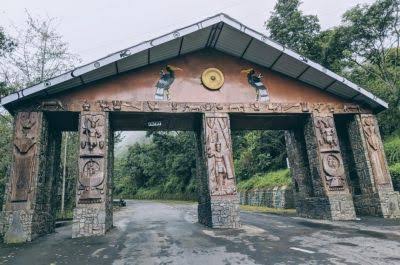
The settlement of Mokokchung in Nagaland is well-known for its enthralling village gates, which are recognized as artistic as well as cultural gems. These gates, which grace the town’s entrances, are remarkable representations of the Ao Naga tribe’s architectural inventiveness. These gates, which are made of wood and have elaborate carvings on them, represent the town’s history and identity.
Zunheboto Village Gates
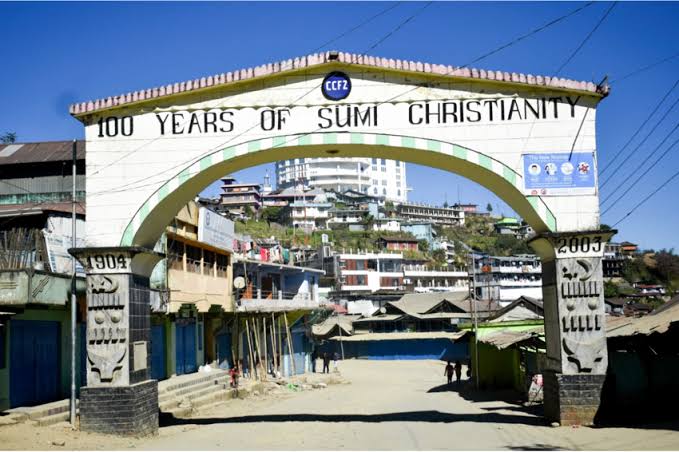
Another Naga town, Zunheboto, has distinctive village gates with cultural and historical value of its own. The designs of the gates skillfully combine folklore, ancestral pride, and heroic tales. Every piece and carving serves a function, honoring the tribe’s accomplishments and representing its ideals. These gates serve as a physical reminder of their common ancestry and a source of identification and solidarity for the Sema Naga people.
Catholic Church Kohima
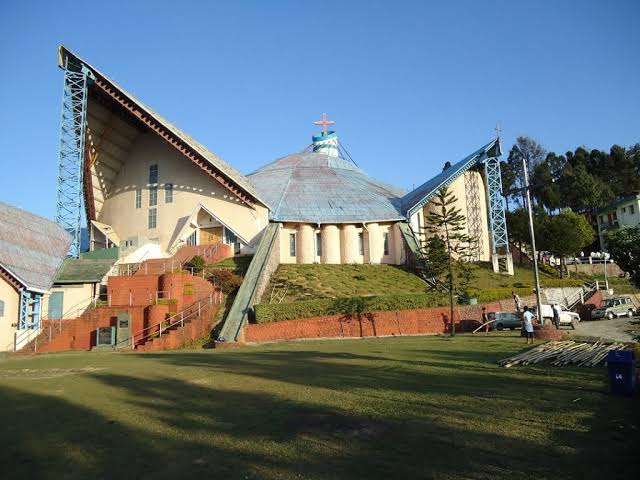
The Catholic Church in Kohima, perched on a hill, is an architectural and historical treasure that gives the city’s landscape a distinct look. Constructed in the period of British colonization, the church exhibits a fusion of regional Naga and European architectural designs.
Kachari Ruins

The mysterious remains of the Kachari kingdom, having flourished in the area centuries ago, are the Kachari Ruins in Dimapur. The ruins, which are made up of a variety of structures such as flat stone seats and octagonal pillars, demonstrate the high level of craftsmanship of the era. According to historians, these buildings functioned as political and cultural hubs.
Tuophema Tourist Village
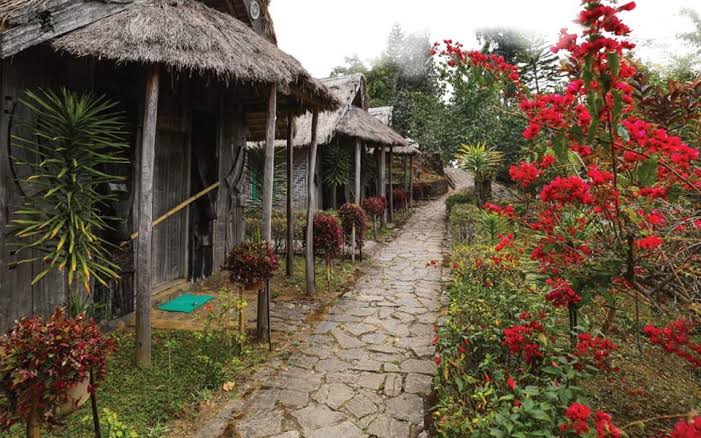
The Tuophema Tourist Village provides a distinctive and genuine window into the customs and way of life of the Naga people. The thatched houses and bamboo buildings that make up the village’s architecture are a reflection of the native way of building homes. Hands-on activities include bamboo crafts, traditional cuisine, and teaching visitors about local customs.
Wokha Monoliths
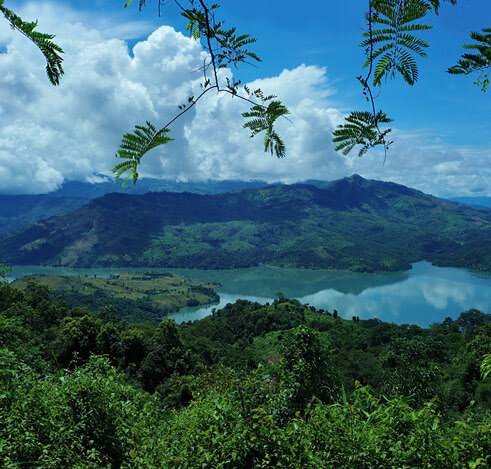
A fascinating historical relic that provides insight into the area’s past, the Wokha District Monoliths are hidden in the district’s lovely surroundings. These massive stones that have been carved into monoliths represent the bravery and accomplishments of the past for all time. These monoliths, which are mute witnesses to the myths and tales of the Lotha Naga tribe, are intricately carved with symbols and motifs.
Khonoma Village Gates
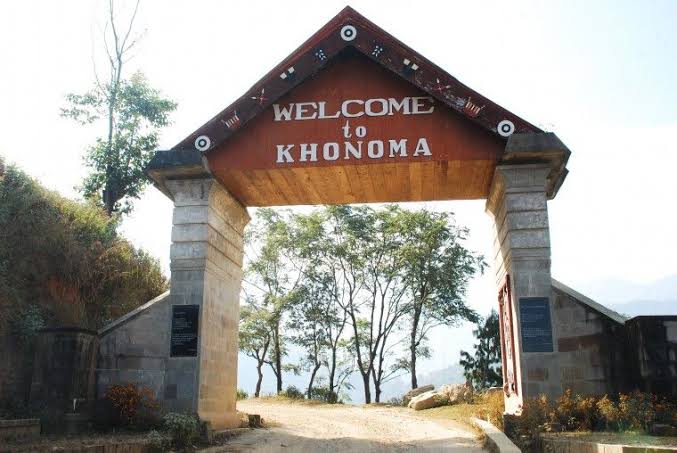
These gates are indicative of the history, pride, and communal identity of the town of Khonoma. They are more than just physical structures. Various elements of the village’s cultural legacy, such as scenes from customary folklore, Naga rites, and warrior emblems, are shown in the elaborately carved images on these gates. The gates, which were originally built as a defense system against invaders during tribal battles, are a symbol of the village’s bravery and cohesion.
What do Architects in Nagaland Feel?

Zynorique’s lead architect, Richard Belho, talks about bamboo architecture, ecological lifestyle, and his life in Nagaland, he says, “The application of bamboo to the region and its works in earthquake zone number five, like Nagaland. Bamboo is the most ideal material for building purposes; I can use it to change the livelihood of the people. It means that I can promote bamboo that has been grown in rural villages and impact the economy of the villagers. Then I get the skilled workers from the villages so I can get them into the construction industry. Locals didn’t feel like working with RCC so when I started working with bamboo, it was most natural that I had to employ the local and rural people only.”
Places to Visit in Nagaland
Kohima
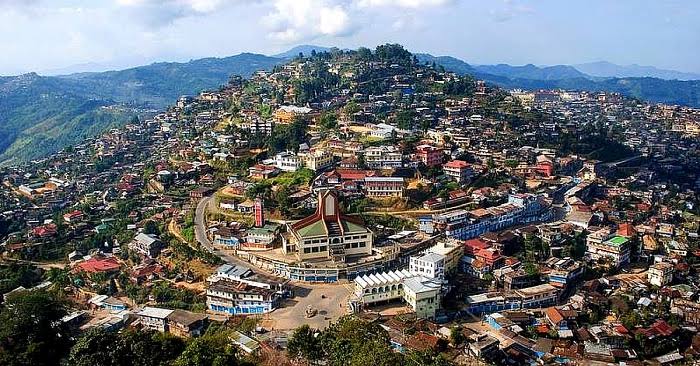
The area was originally known as “Kewhira,” which was anglicized as “Kohima,” because of the Kewhi flowers that grow there. This place is renowned for its unspoiled beauty and ethereal surroundings and is steeped in folklore. It is located 1500 meters above sea level and features charming hills, emerald trees, and gorgeous scenery. Popular here is the Commonwealth War Cemetery, which is home to thousands of World War II veterans.
Mokokchung
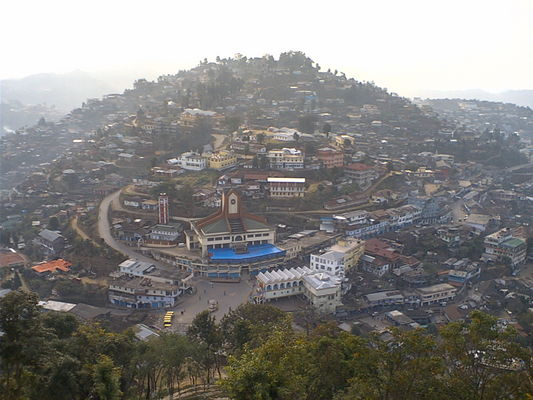
The amiable Ao tribe of Mokokchung is well-known for their kindness. Longkhum, Chuchuyimlang, Changtongya, Mokokchung Village and Park, and Ungma Village are a few of the area’s well-known attractions.
Dimapur
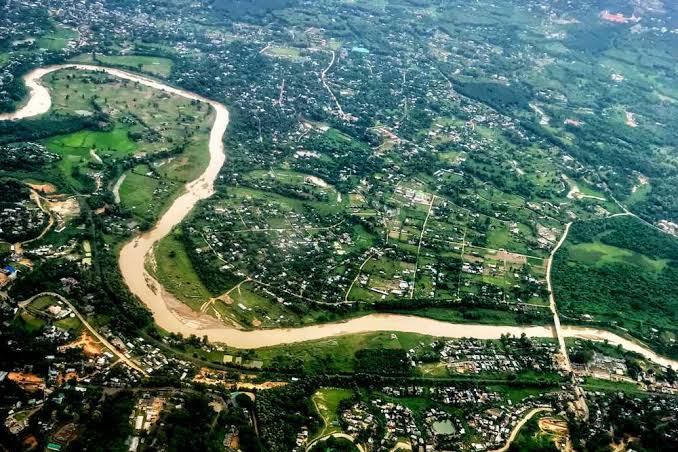
Dimapur is regarded as the entrance to Nagaland. This well-connected town offers lovely views and excellent road conditions. Ahom invasions can be seen at the 13th-century Kachari Ruins, one of Dimapur’s most picturesque locations. The district’s eastern portion is traversed by the Dhansiri River, while its western portion is made up of hills and woods.
Tuensang
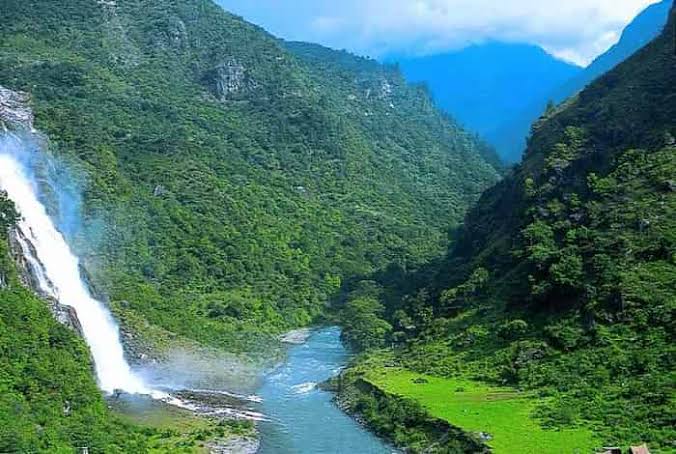
Tuensang, the largest and most eastern district of Nagaland, is a small town bordering Myanmar. It serves as the district headquarters. In addition to exhibiting the vibrant customs of the Naga people, Tuensang provides an understanding of the regional way of life. Tuensang captivates tourists with its verdant hills and valleys, as well as its abundant flora and fauna.
Phek
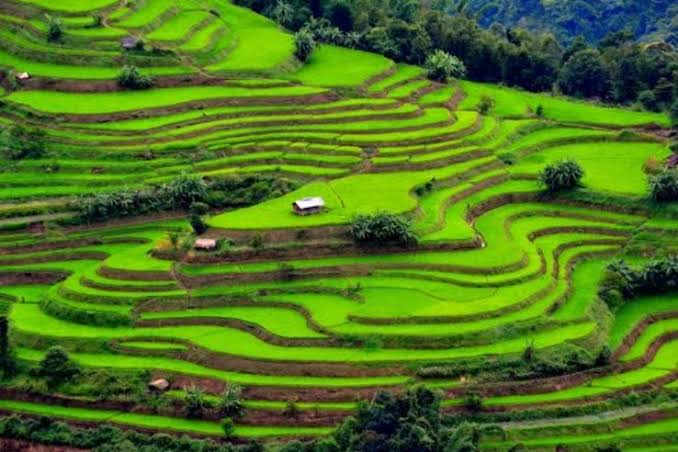
The Phek district of Nagaland is home to numerous lakes, rivers, and other bodies of water. Phek is also home to Khezhakeno, a historic settlement. This place offers a range of activities, such as hiking, trekking, and birdwatching.
Dzukou Valley
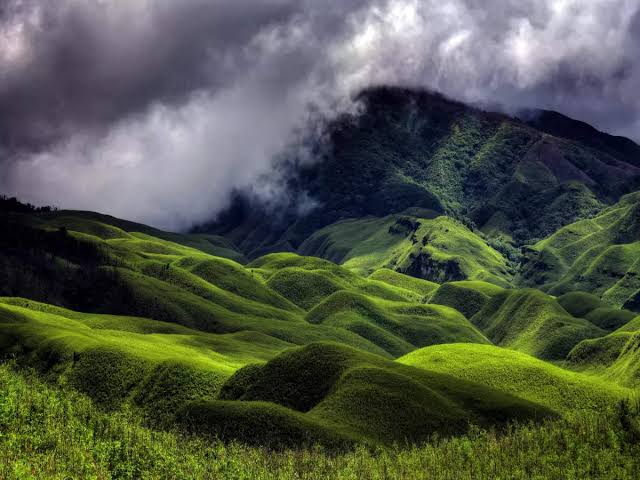
Tucked in the Eastern Himalayas, Dzükou Valley is a beautiful natural beauty that is sometimes referred to as the “Valley of Flowers” of the Northeast. The valley, which is 2,450 meters above sea level, is renowned for its vivid wildflowers, clear streams, and verdant surroundings. Its name means “Cold Water” in the regional tongue, and it has great cultural value for the Naga tribe.
Mon
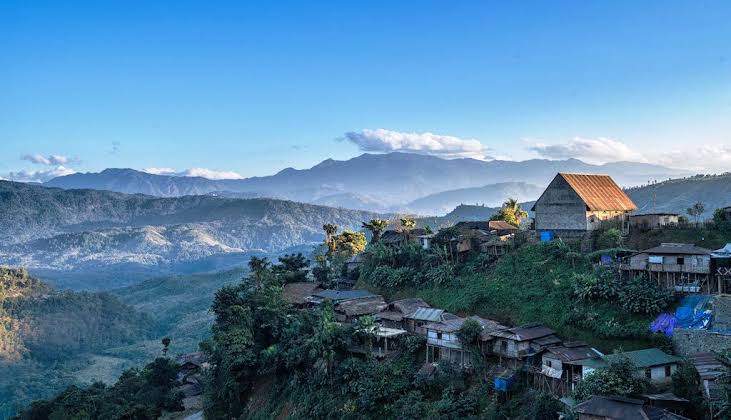
Mon, the Konyak nagas’ abode, offers a distinctive perspective of tattooed faces adorned in billowing loincloths. Perhaps the most remarkable thing about this town is how colorful and unique its people, culture, and clothes are. Despite having few tourist attractions, Mon nevertheless attracts a large number of visitors from all over the world. Veda Peak along with Naginimora, among the most well-liked tourist destinations in the region, is accessible.
Touphema
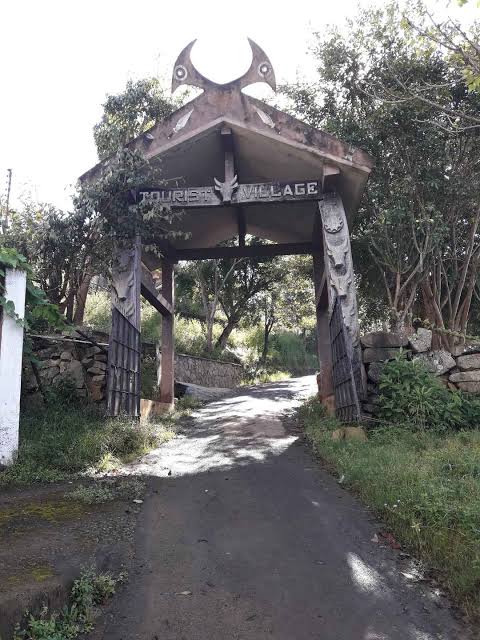
Perched on a verdant hillock is the village of Touphema. Touphema Village is made up of a scattering of little houses that are representative of traditional Naga design. Stay in a hut to get a glimpse of the Angami way of life.
Khonoma
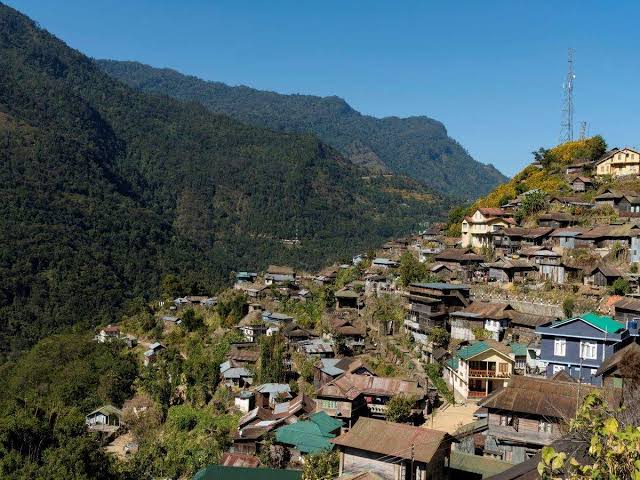
Situated across 123 sq.km., Khonoma, often known as the Green Village of India, is a highly picturesque tourist destination in Nagaland. Additionally, Khonoma boasts one of the area’s oldest terraced farming systems. The town is a living memorial to the brave battle the Angami tribesmen waged to defend their homeland against the British.
Shilloi
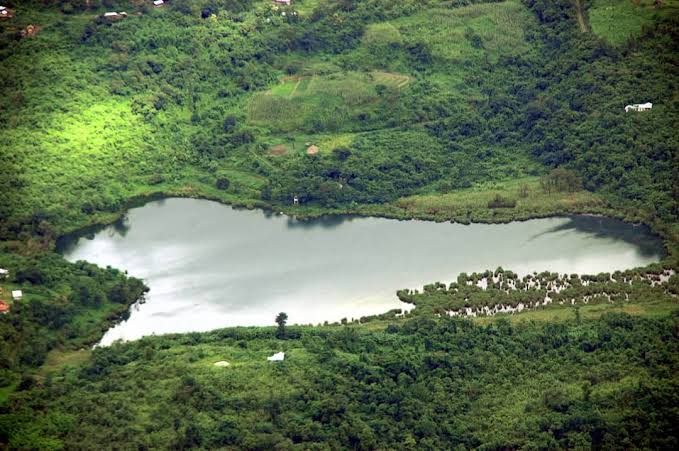
In the center of Nagaland’s Patkai range, Shilloi Lake is an idyllic spot surrounded by lush valleys. The residents of Latsum Village hold great significance for the foot-shaped lake, believing the soul of a holy infant to be resting at its bottom. Consequently, no one uses the lake’s water for irrigation or drinking, nor does it fish.
Naga Heritage Village
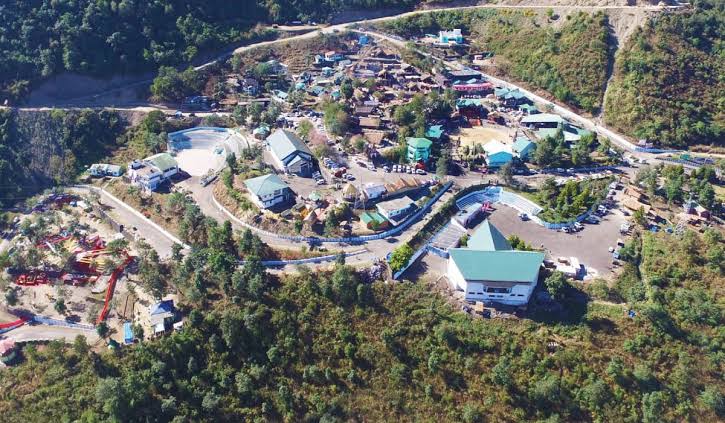
The Naga Heritage Village, referred to as Kisama Heritage Village, showcases the unique customs and culture of the Naga people. For a profound experience, visit the village in December during the Hornbill Festival, when 16 Naga clans are gathered together under one roof to showcase their individuality and distinctiveness.
Pfutsero
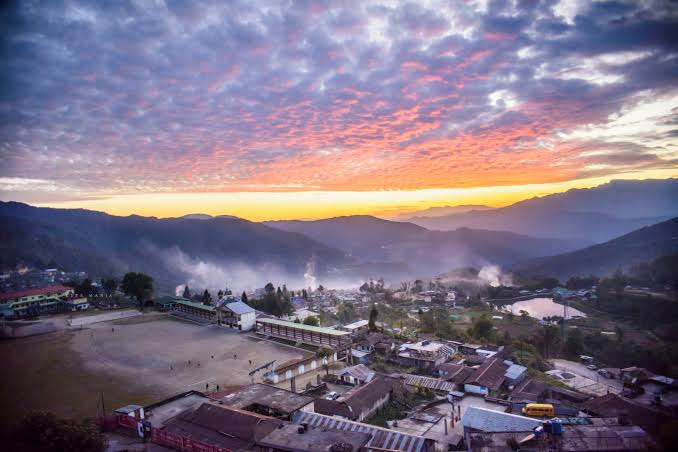
Pfutsero in Nagaland is the coldest city in the region, with temperatures falling below -0 °C. Pfutsero’s frozen lakes contribute to the festive atmosphere throughout the winter season, which is a highly respected holy occasion for the majority Christian populace.
Japfu
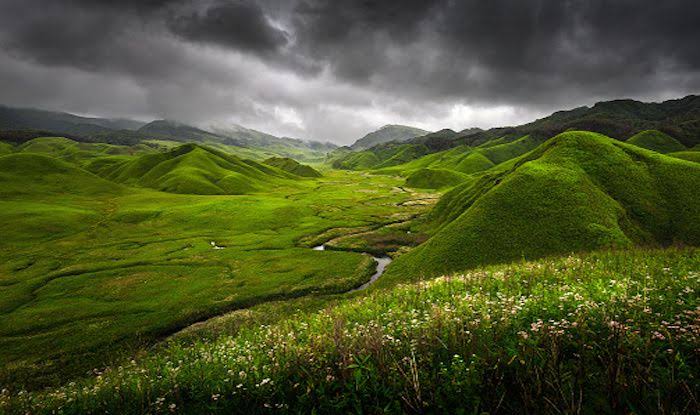
The second highest peak in Nagaland is Japfu Peak, which rises to an altitude of 3084 m above sea level. Enjoying the natural flora and fauna and bird watching are just two of the activities available in this adventure-seeker’s paradise. Known as the Northeast’s “Valley of Flowers,” it is unquestionably worthwhile to visit.
Chumukedima
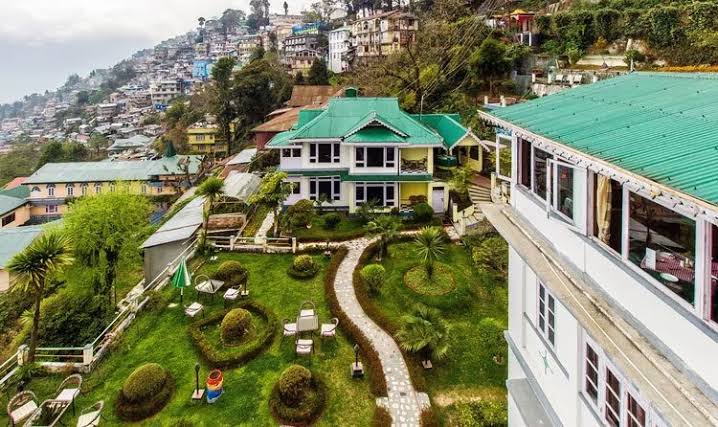
Chumukedima Village is a lovely location for exploring nature and waterfalls. Because of its serene beauty, it is among the greatest locations to visit in Nagaland.
The Future Prospects and Concluding Lines!
Rapid urbanization and modernization pose a threat to Nagaland’s indigenous architecture despite conservation attempts. Still, there is much potential to preserve and advance Naga’s architectural legacy with the right planning, community involvement, and governmental backing.
The possibilities for Naga tribal architecture are infinite in the future. Naga architecture is set to flourish in the twenty-first century, capturing people’s hearts and minds with its ageless allure, thanks to a renewed emphasis on sustainability, conservation of culture, and community-driven development.
In a nutshell, the architectural legacy of Nagaland is evidence of the people’s inventiveness, resolve, and cultural diversity. By adopting conventional construction methods, encouraging community engagement, and advocating for sustainable development strategies, Nagaland can steer towards a future in which its architectural legacy remains inspirational and long-lasting for future generations.
If you haven’t read about the architecture of other Northeastern states (Seven Sisters States), then click the following links to read:
Assam
Arunachal Pradesh
References
- kaarwan.com. (n.d.). Traditional Architecture of Nagaland. [online] Available at: https://www.kaarwan.com/blog/architecture/traditional-architecture-of-nagaland?id=264
- Roy, Dhrubajyoti. (Feb. 10, 2020). Architecture in Nagaland. [online] Available at: https://builtarchi.com/architecture-in-nagaland/
- Ikr, Moamen. (2022). Nagaland Tribal Architecture and its cultural significance. [online] Available at: https://nagabusiness.com/nagaland-tribal-architecture-and-its-cultural-significance/
- Chaudhary, Nishi. (n.d.). Heritage Walk: Nagaland. [online] Available at: https://www.re-thinkingthefuture.com/rtf-architectural-reviews/a10996-heritage-walk-nagaland/#google_vignette
- kaarwan.com. (n.d.). Naga Tribal House Design. [online] Available at: https://www.kaarwan.com/blog/architecture/naga-tribal-house-designs?id=391
- Gupta, Tanya. (n.d.). Walking Through The Streets of Nagaland. [online] Available at: https://www.re-thinkingthefuture.com/city-and-architecture/a2656-walking-through-the-streets-of-nagaland/
- medium.com. (Dec. 22, 2023). Tracing the Architectural Marvels Monuments in Nagaland. [online] Available at: https://medium.com/@whitecamron596/tracing-the-architectural-marvels-monuments-in-nagaland-4f0e53bd05df
- wikipedia.org. (n.d.). Nagaland. [online] Available at: https://en.wikipedia.org/wiki/Nagaland
- TripAdvisor.in. (n.d.). Nagaland Landmarks. [online] Available at: https://www.tripadvisor.in/Attractions-g297659-Activities-c47-Nagaland.html
- kaarwan.com. (n.d.). Nagaland Architecture: Exploring Cultural Significance. [online] Available at: https://www.kaarwan.com/blog/architecture/nagaland-architecture-exploring-cultural-significance?id=641
- housing.com. (Oct. 10, 2023). Tourist Places to Visit in Nagaland. [online] Available at: https://housing.com/news/tourist-places-to-visit-in-nagaland/?gad_source=1&gclid=CjwKCAjw7s20BhBFEiwABVIMrWUWN5Pj4XPiIZHfTNDl8AnMbzHMeEWR89ESszbqV3Ac_dSDBZNXbRoCiKwQAvD_BwE
- blog.kaarwan.com. (Oct. 21, 2019). Life of an Architect in Nagaland. [online] Available at: https://blog.kaarwan.com/life-of-an-architect-in-nagaland-b8826c7f73fd
![]()